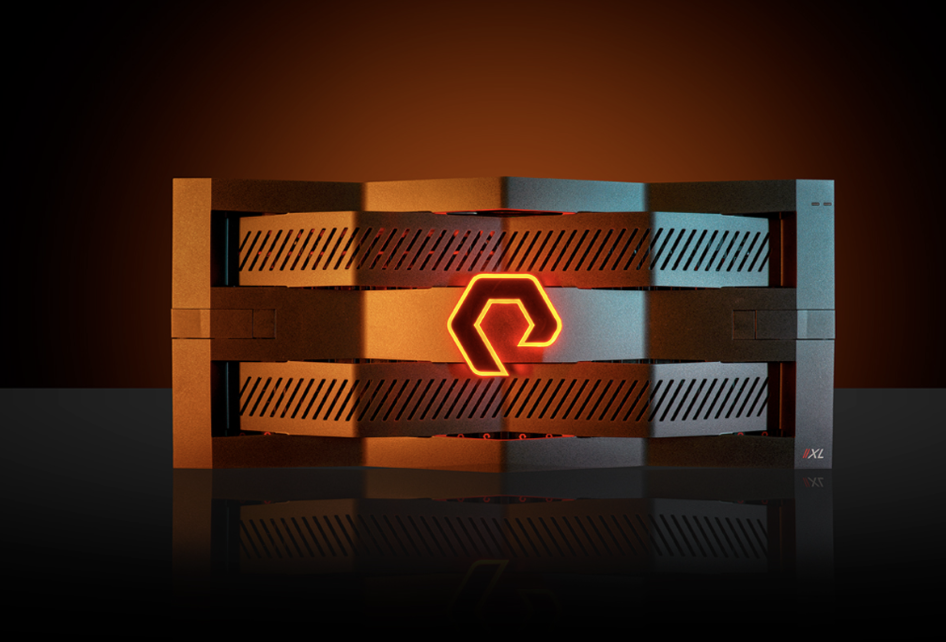 CLOUD
CLOUD
 CLOUD
CLOUD
 CLOUD
CLOUD
Pure Storage Inc. today introduced the Enterprise Data Cloud, calling it a sweeping architectural upgrade to how organizations store, manage, and use data across hybrid environments.
The company says EDC enables organizations to manage block, file and object workloads in on-premises, cloud and hybrid deployments.
The maker of all-flash storage subsystems said traditional, siloed approaches to storage no longer meet the needs of modern workloads, particularly in artificial intelligence environments, which demand large volumes of structured and unstructured data.
“We want to help customers control their data by alleviating some of the constructs associated with the fragmented way data is managed,” said Chadd Kenney, vice president of technology at Pure Storage.
At the core of EDC is Pure Fusion, a storage-as-code control plane that treats all arrays as endpoints in a unified data mesh. This lets administrators manage fleets of storage devices through a single interface and deploy workloads using intelligent presets that automate deployment variables like quality-of-service, protection levels and performance requirements.
Pure also unveiled major upgrades to its automation and orchestration capabilities. Its core platform now supports workflow recipes that integrate storage with computing, networking and applications to enable complex deployments such as replicating a SQL database across multiple data centers and into a public cloud service with a single service ticket. These workflows can be extended to third-party tools and are already in use by partners Rubrik Inc. for ransomware recovery tagging and CrowdStrike Holdings Inc. for historical analysis.
Kenney said the automated features address some of the drudgery of deploying new arrays. “If someone has an application that needs an Oracle deployment, an administrator has to look at the fleet of storage arrays, figure out which is capable of taking on the new workload, and then create the settings to make sure it’s protected with replication, has snapshots and a quality-of-service policy that’s tagged correctly,” he said. “Workflows allow you to create all of the configurations in one set, so all you have to do is provide a few bits of information, and it auto-deploys, giving you day one compliance.”
The company’s AI Copilot conversational assistant has been integrated with telemetry data from across the EDC. That allows it to respond instantly to fleet-level performance queries, deliver configuration scripts and support rapid policy adjustments without human intervention, the company said.
“Within 10 seconds, it will process all the data for 100 different systems, give you the answer and give you the script to run to actually complete that task,” Kenney said.
In tandem with the EDC launch, Pure also expanded its portfolio of storage arrays. The new FlashArray//XL R5 (pictured) delivers twice the inputs/outputs per second per rack unit compared to its predecessor and increases raw capacity by up to 50%.
For latency-sensitive workloads like in-memory databases and vector search engines, Pure introduced the new FlashArray//ST, a memory-based system that it said can deliver more than 10 million IOPS in five rack units.
The company also rolled out FlashBlade//S R2, the latest version of its FlashBlade//S that is designed to support large-scale data pipelines and AI workloads. In a notable shift, object storage support has been added to FlashArray to allow organizations to consolidate block, file and object storage into a single system.
“We build our own devices that are streamlined to only do the things that we want them to do,” Kenney said. “We now manage all of the facilities of interacting with flash through the software tier.”
On the service front, Pure expanded its Evergreen One as-a-service offering with adaptive performance tiers and usage-based billing aligned to customer workflows. For example, in medical imaging, customers can now pay per scan rather than by capacity, Kenney said, better matching infrastructure costs with business operations. The company has also lowered the minimum commitment for entry-level customers from 1.5 petabytes to 750 terabytes and introduced flat-rate snapshot protection pricing.
Pure said customers can access many of these capabilities without hardware changes. “There is nothing involved in migrating,” Kenney said, referring to EDC. “You can just upgrade the system’s firmware and start creating fleets. Then you can build your workflows to change the way you deploy systems and take advantage of some of the orchestration capabilities.”
With EDC, Pure said it’s rethinking enterprise storage while positioning itself not just as a storage vendor but as a platform for autonomous data operations. “We’ve solved for a lot of the simplicity at a storage layer, but now we’re going to move that simplicity to an even higher level,” Kenney said.
Support our mission to keep content open and free by engaging with theCUBE community. Join theCUBE’s Alumni Trust Network, where technology leaders connect, share intelligence and create opportunities.
Founded by tech visionaries John Furrier and Dave Vellante, SiliconANGLE Media has built a dynamic ecosystem of industry-leading digital media brands that reach 15+ million elite tech professionals. Our new proprietary theCUBE AI Video Cloud is breaking ground in audience interaction, leveraging theCUBEai.com neural network to help technology companies make data-driven decisions and stay at the forefront of industry conversations.